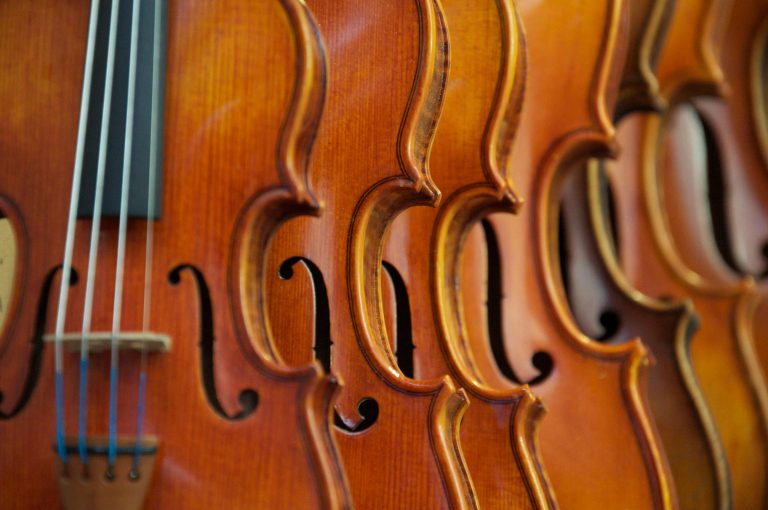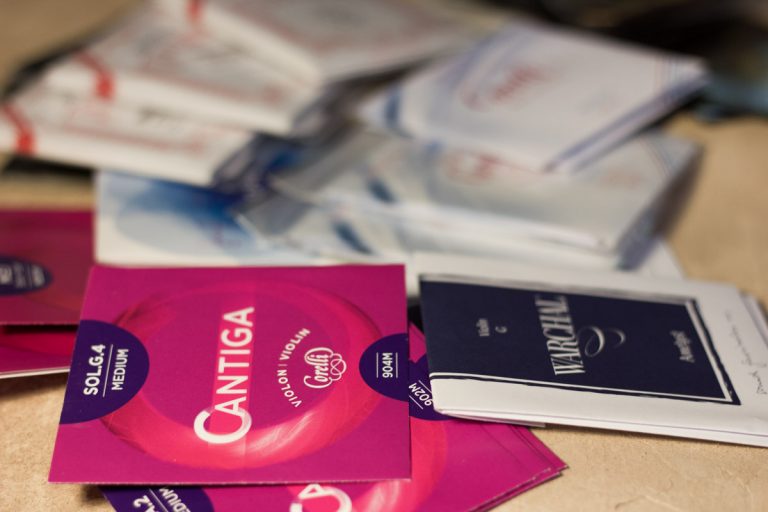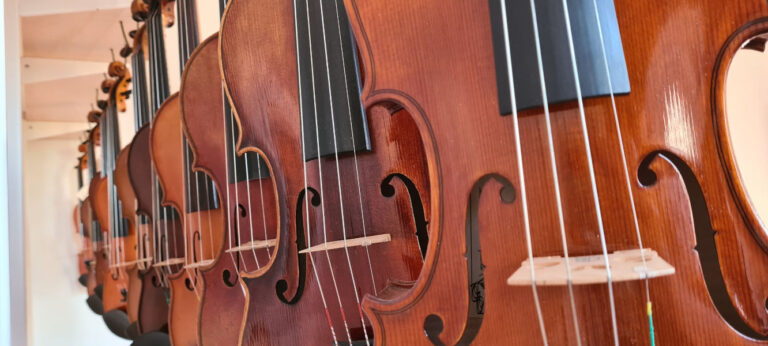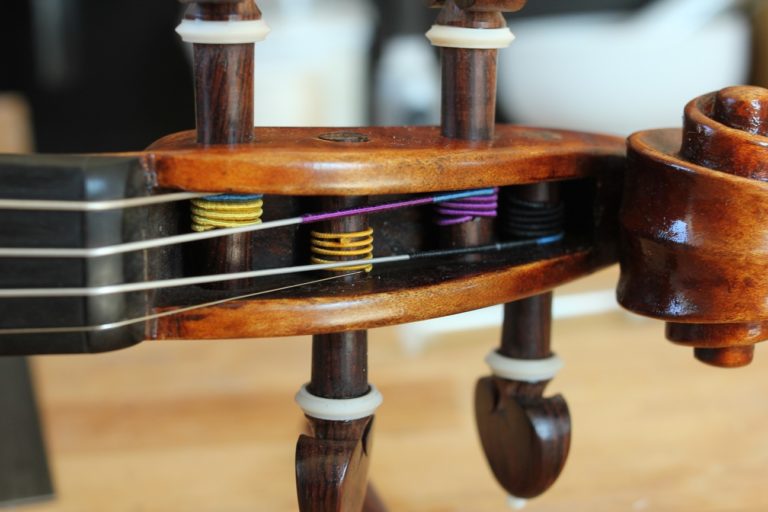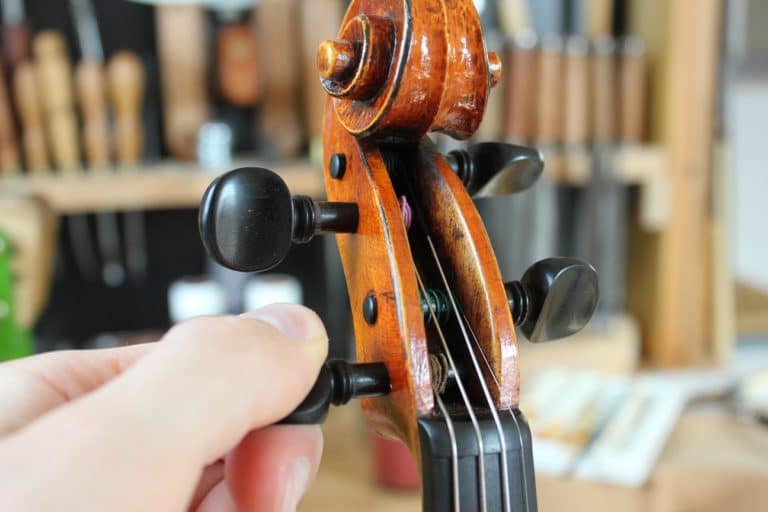To prolong the life of your strings, it’s important to care for them properly. And the best way to guarantee their longevity is by cleaning them on a regular basis. With this comprehensive guide, you will learn how to clean strings like a pro.
Why clean your violin strings?
[pullquote align=”right”]
To eliminate sweat and oil buildup, wipe along the full length of the string with a dust cloth.
[/pullquote]
To ensure optimal performance, strings require regular maintenance. This will preserve their tone quality and extend their life span.
Before anything, sweat and skin oils need to be wiped away. Although the oil from our fingertips is completely natural, they still corrode the metal of the strings. Every musician is different in this respect, some having more acid in their natural skin oils than others. Additionally, these oils can deeply penetrate the instrument’s string fibers, progressively impairing their natural vibration.
All this said, the main purpose of this article is to discuss rosin buildup. Although it can occur on on various parts of the instrument rosin buildup mainly affects the areas that come in contact with the bow strings.
Consistent cleaning of rosin buildup will help preserve the tone quality and vibrancy of the strings.
I have noticed that certain musicians get in the habit of applying rosin directly on the strings. While this method certainly has certain practical advantages, it will not help preserve the strings. Saturating the string with rosin only weighs it down and shortens its duration. This is why rosin should really only be applied to the bow hair.
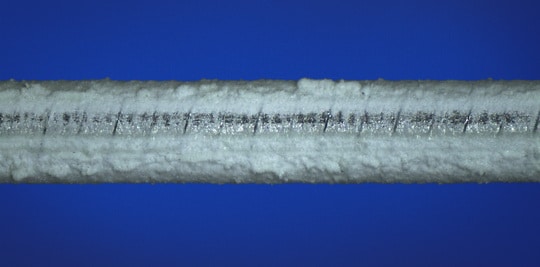
Things to avoid when cleaning strings
There are many methods out there for string cleaning, some better than others. Let’s begin by discussing which ones to avoid and why. Poor approaches to string cleaning are sometimes the most popular. But leaning on these methods will impact the performance and durability of your strings, which then defeats the whole purpose of string preservation.
Cleaning with liquid solvents
Solvents will dissolve resin deposits almost instantaneously. Among the different products out there, you will find alcohol (as well as a plethora of string maintenance products that retailers try to upsell). Even though these products offer a quick and easy fix to rosin buildup, they are not an ideal solution.
String contamination
The structure of coiled string is quite intricate. In fact, for the string to vibrate as freely as possible, the surface of the string has to be flexible. Cutting it into ribbons makes it more porous and thus susceptible to impurities over time.
The accumulation of debris is a major factor in strings wearing out prematurely. Indeed, the less sweat, dirt, dust, dead skin on the string, the longer it will last. It is pretty difficult to fight against buildup, as it occurs during playing, but regular cleaning will help limit the damage done to the strings.
For areas of the strings that come in contact with the bow, it is almost exclusively rosin that is introduced when solvent is used. Indeed, when rosin is dissolved with alcohol or other products, it then penetrates deep into the string fibers.
[columns] [span6]
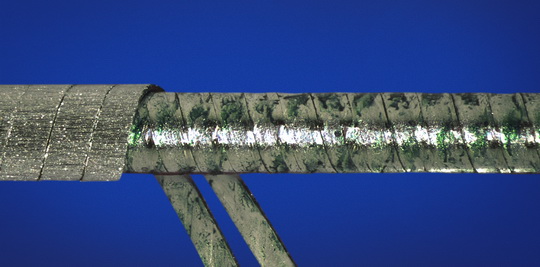
[/span6][span6]
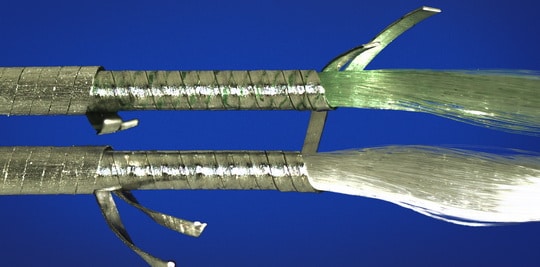
[/span6][/columns]
In the pictures above, the alcohol was dyed green to show how impurities spread in the strings. The rosin, dissolved by the solvent, penetrates the top layers and quickly reaches the synthetics fibers at the string’s core. The alcohol then evaporates, pervading the string to the point where it can no longer vibrate.
Cleaning strings with alcohol is probably the best of the worst of solvents to use, as it evaporates completely. Other string cleaners can contain other ingredients that will also penetrate the strings and likely damage them beyond repair. So even though this may present a quick solution, it is absolutely not recommended.
Cleaning with steel wool
Another method you may hear about is using steel wool to prevent rosin buildup. This however creates different problems.
Pictured below are two different strings. The top string is in its natural state, while the bottom strong has been rubbed with .000 steel wool for 60 seconds. Even though it normally only takes a few seconds to clean a string with steel wool, imagine that this string has undergone successive cleanings (one minute in total).
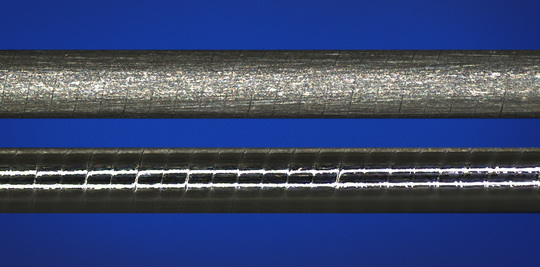
In this short period of time, the string’s diameter will have reduced by 10 to 15 microns (0,010 to 0,015 mm) due to abrasion. If the entire string were to be treated this way, its tension would decrease by about 1-1.5 Newton, or 0.1 to 0.15 kg of tension in the length of the instrument. This may seem trivial, but eroding a specific area of the string leads to instability, making tuning difficult.
And that’s not all: this method of string polishing greatly alters its surface structure. Not only does it open up the string’s “pores,” letting contaminants enter in, but it also polishes out the natural elasticity that allows the bow and rosin to vibrate along the string. The instrument loses thus its ease of play and grip.
Best practices for string cleaning
Now that you know which methods to avoid, let’s discuss how to clean strings in a smart, efficient way. You will notice that it doesn’t take much to ensure a successful cleaning.
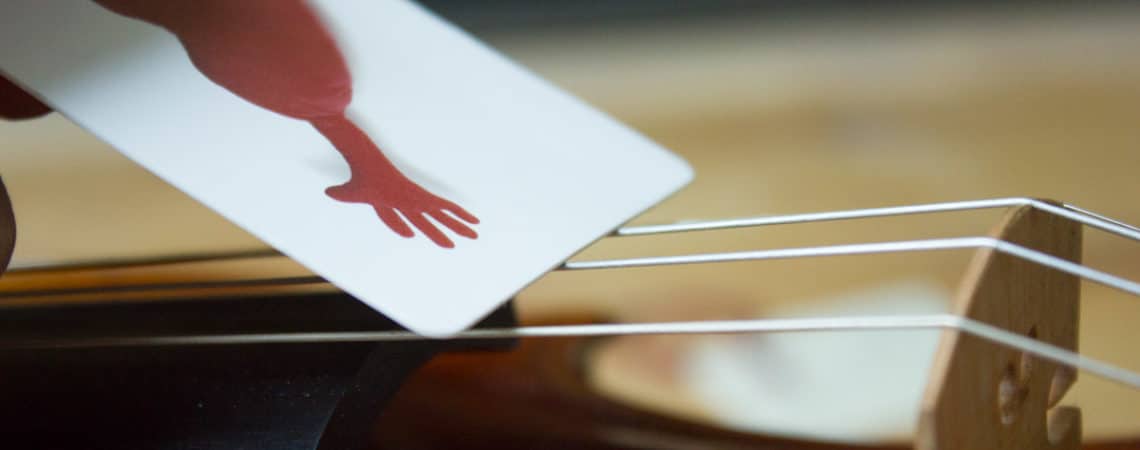
Cleaning tools needed
- A dust cloth (microfiber, cotton, silk)
- A plastic card (ex. a credit card).
For strings maintained on a regular basis
It’s easier to clean strings that are maintained on a regular basis. Simply wiping the strings after each use with a microfiber cloth is a simple habit that makes all the difference.
The fine layer of dust that accumulates on the string during use comes off in one simple wipe of a cloth. Simply pinch the string between your fingers and wipe along the length of the string. Focus particularly on the areas where the bow glides. As long as you use a soft, clean cloth, this will not do any damage to the string. Easy as pie!
Let’s look more closely at how rosin buildup occurs when we play our violin, viola, or cello. It has a very particular way of settling on the string. You might even say it looks like a snowdrift. The part of the string that has the most contact with the bow will also have the least amount of dust.
[columns] [span6]
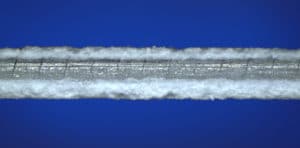
[/span6][span6]
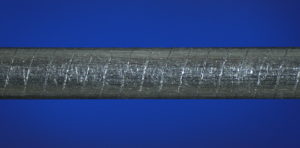
[/span6][/columns]
Cleaning dusty strings
If we neglect our strings for a while, the entire string will end up covered in dust. Oxidation and friction causes the dust to form a hard, thick crust on the string’s surface.
Many musicians refuse to dry wipe their strings because of the unbearable noise it makes. The string does tend to screech when vigorously wiped. However, this remains the best solution for cleaning your strings and extending their durability.
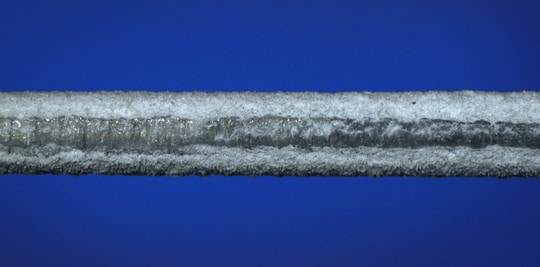
Cleaning with a dust cloth and scraper
Most rosin buildup can be easily removed with a dust cloth. However, too much friction can increase the temperature of the string. This will cause the rosin dust to melt and then fuse to the string. The buildup then becomes much more resistant to removal. It is for this reason that it’s important to clean the strings gently.
[pullquote align=”right”]
The best method is to “cold clean.” Waiting 10-20 seconds between each intervention is sufficient.
[/pullquote]
Once you have wiped the string, you will notice that a rosin “crust” remains. This is indeed the result of the fusion of rosin particles that were heated up through friction with the bow. It then hardens and corrodes, becoming even more difficult to remove. That’s why it’s important to clean and collect any residue with care.
The surface of the rosin is very fragile but can be easily removed with a scraper. A stiff, plastic card is very effective, as it is harder than the resin but softer than aluminum. Avoid at all costs rubbing the string with steel (such as a knife), as this will make the string very breakable.
This method works best when the plastic card is placed at an angle, like that of a razor blade.
[columns] [span6]
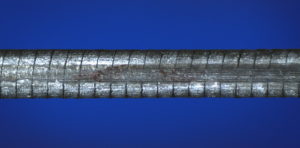
[/span6][span6]
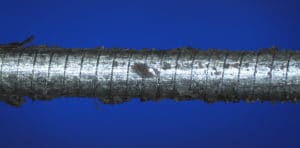
[/span6][/columns]
Finally, one last wipe is necessary to get rid of the remaining pieces of residue. Once the scraper has broken up the crust, it is much easier to remove debris with a cloth. This results in strings that are perfectly clean and free of damage. That’s why I find this cleaning method to be the best.
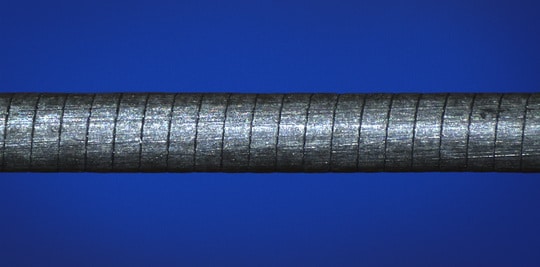
This article is inspired by the admirable work of Bohdan Warchal and his research on strings.

